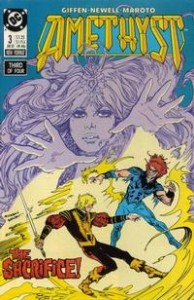Ooku: The Inner Chambers Volume 1 by Fumi Yoshinaga
This was one of my most anticipated new manga series, because I naturally expect that anything by Yoshinaga will be excellent and I was incredibly intrigued by the premise of the book. Ooku takes place in an alternate universe during the Edo period, where a mysterious disease has wiped out most of the male population. Gender roles have reversed, with women taking on men’s work, while the remaining men are protected, pampered, and cosseted due to their increasingly rare and important sperm. A new shogun takes over and a young man enters service in her harem aka The Inner Chambers.
Yunoshin is from an impoverished samurai family, and he’s been educated in the art of fencing. He’s hopelessly in love with a childhood friend O-Nobu. She’s the daughter of a prosperous merchant and thus not likely to marry into a poor family. Unlike other men who sell sex to women who are desperate to attempt to conceive a child, Yunoshin sleeps with whoever asks him, even women who are older or less attractive. Yunoshin’s mother announces that he’s received an offer of marriage. He announces his intention to enter the Ooku, saying that he’ll send his allowance home so his sister can use the money to find a husband. Yunoshin gives up on his love for O-Nobu and enters the small world of the Inner Chambers, a society comprised of men devoted to decadence and an elaborate social hierarchy that proves to be complex for a newcomer to navigate.
When Yunoshin enters the Ooku, the shogun is a young child. The men have nothing to do but bicker with each other and perform administrative duties. Yunoshin is now called only by his family name Mizuno. When some of the men make an attempt at hazing Mizuno he defends himself both physically and verbally. When they make fun of him for his hairstyle, he condemns the cloistered men for not keeping current with the latest trends in fashion. Mizuno actually proves to be fairly canny at adapting to his new circumstances, but he’s also being manipulated and set up as the perfect scapegoat as he rises in the ranks in the Ooku, reaching the level where he may capture the shogun’s attention.
When the new shogun takes command the pampered men of the inner chamber are shocked by her radically different ideas. Nobu is the third child of a noble family that lived in a far province. She regards the Ooku as an irresponsible drain on the country’s treasury. Nobu decides that she’s most comfortable dressed in plain robes. She bluntly speaks her opinions. When a lady-in-waiting dresses her in an elaborate gown Nobu fires her, saying “At a time when the shogunate’s coffers are near empty, it strikes me as sheer folly for one who is charged with ruling the nation and rebuilding its finances to pad around dressed in such opulance. ‘Tis something only a lunatic would do. And it strikes me also that thou art afflicted with precisely such lunacy, Manabe. My regrets, but I cannot have such a madwoman serving as a privy councilor, for that is an important government post. Surely thou dost agree?”
While she has simple tastes Nobu is not afraid to make strong political statements by firing old officials and installing her own trusted advisers. Some of the nicest moments in Ooku occur when Nobu and her right hand woman Kano meet to talk about strategy and share some laughter in the gilded palace. Nobu has the self awareness and curiosity to regard some of the customs of the shogun’s office with suspicion. Why must she meet foreign visitors by wearing male clothing and sitting behind a screen?
Nobu and the inner chamber are introduced through Mizuno’s experiences, setting up an intriguing world with an interesting ruler. I thought learning about the societal details of a gender-flipped Japan combined with engaging characters like Nobu and Mizuno was entertaining and thought-provoking. Yoshinaga’s art style uses more variation in tone and texture in Ooku, bringing out the details in the elaborate costumes worn by the characters. I always appreciate her facility with facial expressions as her characters interact with each other. This manga definitely deserves the excellent production work of the Viz Signature line, and I’m looking forward to reading future volumes of the series.


